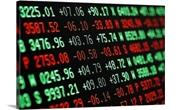Prices

February 6, 2022
Hot Rolled Futures: Is Change Afoot?
Written by Tim Stevenson
SMU contributor Tim Stevenson is a partner at Metal Edge Partners, a firm engaged in Risk Management and Strategic Advisory. In this role, he and his firm design and execute risk management strategies for clients along with providing process and analytical support. In Tim’s previous role, he was a Director at Cargill Risk Management, and prior to that led the derivative trading efforts within the North American Cargill Metals business. You can learn more about Metal Edge at www.metaledgepartners.com. Tim can be reached at Tim@metaledgepartners.com for queries/comments/questions.
The first chart we will look at this week is front month HRC futures. We’ve been on quite the roller coaster, with prices soaring in 2021 before starting, shall we say, a very intense correction. U.S. prices became completely unhinged relative to international price levels, which normally can only happen for a short period of time. We are seeing this relationship correct currently, with prices here declining rapidly.

On the other hand, HRC futures showed an increase week/week (chart below). While one week does not make a trend, we thought this was a dynamic worth pointing out. What may be causing this? There are a number of potential reasons. First, futures prices have been in a very steep “backwardation,” which is a term that means months that are farther out in the future are at lower prices than the closer-in months. This backwardation level has been extreme and is discounting that the underlying index will fall another several hundred dollars from here. Once futures market participants believe that the downcycle is fully “discounted,” they may come in to buy futures. In addition, the low level of futures prices (relative to spot months) can also entice OEMs to come in and buy contracts to hedge their steel costs in the future. We have been seeing interest in not only the Q2 months of 2022, but also farther out in the second half of the year. You can see by the bottom panel on the chart above that some of the months further out have seen some of the bigger increases.

The ore market also has been rising after a vicious selloff in China from mid-2021 until late November (chart below). Ore prices have made quite a recovery on anticipation of a post-Olympics pick-up, and promises from the government of further stimulus to “stabilize” the economy.

Busheling prices, however, have been moving in the opposite direction, in part due to slower demand for the material. Normally, winter weather tends to negatively affect supply of scrap, and we’ve all heard of the production issues in the automotive sector, which is also the primary source of busheling scrap. Despite these factors that would normally be positive for prices, we aren’t seeing pricing get upside traction just yet. One would think that with all the EAF capacity coming on, we should see demand pick up later in 2022.

One last topic for you before we close. While HRC futures volumes have been climbing steadily, options on the futures contract have been slow to catch on. That has all changed over the past couple of weeks, as there has been a significant amount of trading activity in these contracts. This is an exciting development for a couple of reasons. First, with more options trading, it will give market participants a chance to use a new type of risk management tool, one that can protect buyers from upside risks while participating in downside price moves via buying a call. It can also give those who are long steel inventories a chance to protect themselves from a downside move in the market, while still benefitting from upward moves, via buying a put.
“Implied volatility” is a fancy term that option traders use to discuss whether or not options are expensive or cheap, but what they are really talking about is how big of a price move is anticipated in the underlying HRC contract. The volatility we have seen in the underlying HRC contract has been high, which tends to push up option prices, but in recent trading activity the assumed underlying volatility has been coming down somewhat, which may be contributing to the increased trading activity.
The other good thing about options trading increasing is that it tends to increase the trading volume in the underlying HRC contract, as traders sometimes use this to hedge their option purchases or sales. Both of these recent changes are a positive for those looking to hedge the risks in their business – either from upside or downside moves in the price of steel.
With that we will close and hope that 2022 is off to a great start for everyone.
Disclaimer: The information in this write-up does not constitute “investment service,” “investment advice” or “financial product advice” as defined by laws and/or regulations in any jurisdiction. Neither does it constitute nor should be considered as any form of financial opinion or recommendation. The views expressed in the above article by Metal Edge Partners are subject to change based on market and other conditions. The information given above must be independently verified and Metal Edge Partners does not assume responsibility for the accuracy of the information






